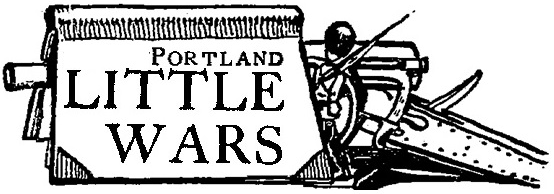To start the game off there was a challenge between champions fight per the scenario. We suited this to Lion Rampant by resolving a duel between invisible champions. The Briton won and recieved the boon of a single automatic pass of a morale check once in the game (which he then forgot to use). Victory was a simple rubric of first side to lose four units (out of seven) loses the game.
(Above: early moves, the Briton cavalry advancing at upper right)
Opening moves consisted of the Briton cavalry moving up aggressively on the Briton left while the infantry arranged itself on the right. The Saxon left (three units) shifted hard to the left to try and dogpile on Briton archers anchoring the flank. This went poorly, with the Saxons taking many casualties from the archers, then fairing poorly in a melee, followed by the leader's unit routing, throwing the entire command into disorder. Further casualties and poor morale checks resulted in the loss of two of the three units in that division.
(Above: Saxon gedriht infantry)
Meanwhile, on the opposite flank, the Briton cavalry came to grips with the two Irish units, who had a "ferocious clash" rule wherein they could reroll all misses on the first melee of the game, which they each used to severely damage one cavalry and destroy another. The remaining two cavalry units suddenly found themselves positioned in front of three Saxon and Irish units at under 6", allowing the invaders to rain javelins upon them, with the end result of all three cavalry units routing or being destroyed!
(Above: Irish infantry)
(Above: set-up for final showdown)
So, with each side having a flank thoroughly repulsed, we were left with four unit of infantry per side. The Britons formed up and the Saxons surged forward. Despite a strong attack by the elite Saxon gedriht, they were repulsed by a strong melee performance by the archers, deciding the game in favor of the Britons.
(Above: Saxon gedriht prepare to charge Briton infantry)
Overall, as I expected, the Saxons performed much better in an open-ground battle than they previously did in the River Glein scenario, where they could not concentrate javelin fire upon the Britons. Otherwise, the Saxon "gregarious" rule (at the end of a melee, this unit will receive a +1 bonus to any courage check resulting from that melee for every additional Strength Point it outnumbers its opponent by) seems rather redundant. However, dicing for Impetuous Charge (on a 1) only if within 6" of an enemy had a nice intended feel to it. Archers are also perhaps a little too tough in melee (defending on 4+!)







No comments:
Post a Comment